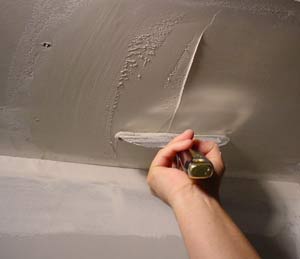DRYWALL PLASTERING CONTRACTOR

Drywall Plastering Contractor
Plastering drywall is a fairly straightforward process, but some people are less skilled, and may prefer to hire a professional to do it. There are several reasons for this, but the most obvious is to save money. The process usually involves two thin layers of joint compound and two coats of finish. During the first layer, you will need to carefully press the plaster material through the cracks. If there is a large amount of relief, you will need to add additional joint compound and finish it with sandpaper.
The first step in plastering drywall is sanding. The final step is to work the plaster while it sets, in order to achieve a smooth finish. Typically, it takes about five hours for a wall to be completed with a
smooth finish. It can also take several work sessions to complete this process. If you are doing the project yourself, consider hiring a professional like us for the drywall installation. You can also try applying the drywall to several non-adjacent walls, which will allow you to apply the plaster more quickly.
The second step is to prepare the wall by using a blue board. The blue board is used as a base for the next layer of plaster. It is similar to sheetrock, but has special qualities that help it withstand high moisture content in wet plaster. Once the blue board is ready, it is applied over the blue board. The final step is applying the finish coat. It takes much less time than plaster, and it is cheaper as well.
Another important step is to use a margin trowel to straighten out the edges. This tool will allow you to apply the finish coat to the entire wall and avoid damaging the drywall underneath. When setting up the first coat, make sure that it is about 1/8'' below the level. Once the brown coat has dried, brush it with water to make it stick. After 24 to 48 hours, you will notice that it is sound and will adhere to the wall.
After the joint compound has been applied, you can paint the wall. You can use the drywall knife to apply joint compound and sand it. It will also make it easier for you to reach the small nooks and crannies. Afterwards, apply the latex sealer and paint over the plastered wall. Then, you can finish the job by painting your drywall. Then, you can choose a color that suits your décor and your home.
Plastering drywall is a more time-consuming and labor-intensive process than plastering. However, it has several advantages over drywall. The gypsum plaster is more durable and can last for centuries. While both methods are good for different settings, it is better to use the more durable one if you have limited skills. If you plan to use a plastering tool, make sure that you read all instructions.
Drywall is an inexpensive way to improve the look of your home. It is best to use a quality plastering tool for the job. The drywall you use should be textured. If the textured drywall is painted, you can paint it or cover it with a textured material. If you need a smooth surface, try painting drywall with primer. The textured type will be more durable and will give the room a smooth finish. Opting for stucco is also a good option since it is like choosing the silk of plasters, ensuring your walls have the smoothest, most elegant finish.
Plastering drywall is a relatively easy project. Once the material has been framed, you can start the plastering process. After putting up the first coat, you will need to remove the switch plate and cover, as well as any electrical socket covers. You can also ask your drywall contractor about the cost of plastering drywall and the materials they use. When hiring a plastering drywall contractor, make sure to ask about the costs of other homeowners before choosing a particular contractor.
Drywall is often thicker than plaster. The thickness of drywall is usually between three and eight inches. If you are planning to plaster wall, you should measure the studs in the wall and measure the space where the drywall will go. Once the walls are properly measured and the studs are properly drilled, you can start plastering. Once you have the drywall, you should hang pictures and other decorative objects.
At Lusha Drywall Solutions, customer satisfaction sits at the core of our plaster repair services, where every smoothed lath and precise wallboard placement reflects our commitment to excellence. Our plaster and drywall contractor service is more than just fixing walls; it's about delivering a seamless drywall repair service that upholds the integrity of your space and ensures your peace of mind. Exceptional customer service is the mortar to our drywall patch, holding the fabric of our client relationships as firmly as our plasters adhere to the lath. We don't just patch up drywall; we build enduring trust with every repair, ensuring every client's home is as flawless as their experience with us. True customer satisfaction for us means not just meeting, but exceeding expectations, with every layer of plaster we apply.


